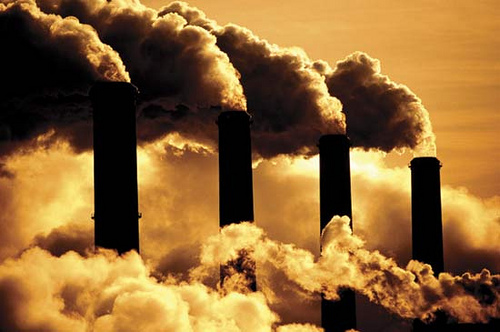STUDY: Vocabulary
Vocabulary

Humans burn fossil fuels and alter the carbon cycle. Photo courtesy of London Commodities Market/Flickr.
Carbon cycle: movement of carbon from solid to liquid to gas and from rocks to water to air to organisms
Coal: solid fossil fuel formed from the partially decomposed remains of plant matter, primarily
Conduction: heat transfered via direct contact from an object with a higher temperature to lower
Crude oil: mixture of many different hydrocarbons
Fossil: remains from a living creature that become a rock
Fossil fuels: energy sources that form from fossils and are burned to create energy (e.g. coal, oil, natural gas)
Greenhouse effect: atmosphere acts like a "blanket" trapping in heat and keeping temperatures warm
Greenhouse gases: gases in the atmosphere that help absorb and trap heat, including carbon dioxide and water vapor
Hydrocarbons: materials that are crushed under tremendous heat and pressure. They can be soild (coal), liquid (oil) or gas (natural gas)
Natural gas: made of primarily the hydrocarbon methane gas
Nonrenewable resources: resources that are finite and, for all practical purposes, can be used up completely
Nuclear energy: energy released from the splitting of an atom
Oil: liquid fossil fuel
Radiation: light/heat transfered between sun and Earth
Renewable resources: energy sources that are abundant and can replenish themselves
After you have completed this part of the lesson, you can check the box for this lesson piece in the course to mark it as complete